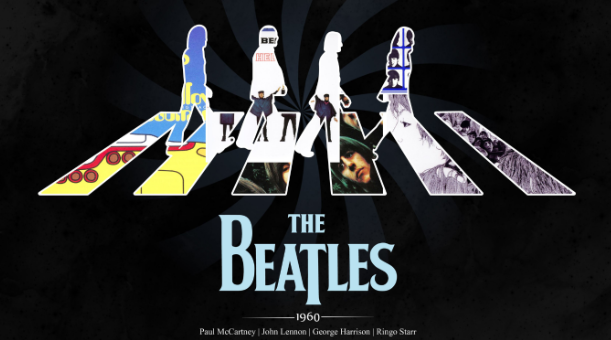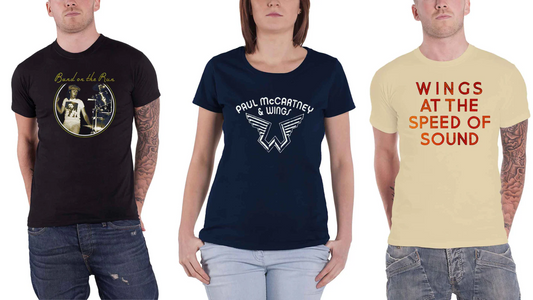When people think of The Beatles, they often think of those “Mop-Top Rock Stars” who took the world by storm in the 1960s.
But every legend has a beginning. And, for The Beatles, the journey started long before the madness of the screaming fans and record-breaking albums.
Their story is one of those movies with passion, persistence, and perfect timing. The journey of four men who shared a love for music that created a history.
But when did the beatles band start? Was it when John Lennon formed a skiffle band called The Quarrymen? Was it when Paul McCartney and George Harrison joined in? When did the beatles actually start performing? When did they start making the music?
Well, this is just the beginning! To know more, read below to learn how The Beatles rose from a group of ambitious teenagers to the most influential band of all time!
Before the Beatles - The Seeds of a Musical Revolution
Every great story has a beginning. And for The Beatles, it all started in 1956 with a rebellious 15-year-old teenager, John Lennon, from Liverpool. For his love of music, he formed a skiffle group with the name “Quarrymen.” This band was named after his school, Quarry Bank High School in Liverpool.
In July 1957, Lennon first met a 15-year-old Paul McCartney, who came to attend the Quarrymen’s second performance. Impressed by Paul’s abilities to play the guitar, John asked McCartney to join the band.
Later on, Paul introduced George Harrison to John and asked him to become the lead guitarist of the band. John, on the other hand, thought that Harrison, then 14 years old, was too young for the role.
But after being impressed by Harrison’s performance on the upper deck of a Liverpool bus where he played “Raunchy” for Lennon, he was finally asked to join the band.
In 1958, this trio was inseparable. They played in small clubs, practiced day and night, and changed their band’s name several times. But this journey was just the beginning!
What’s in a Name? The Many Faces of The Beatles
Before becoming the legendary “The Beatles,” the band went through several name changes. Each name beautifully reflected the evolution of their stories. They named the group “Johnny and the Moondogs” while competing in a talent show.
|
Fun Fact: John Lennon, Paul McCartney, and George Harrison also performed as “the Rainbows.” In an interview with New Musical Express, Paul McCartney said, “We were Rainbows because we all had different colored shirts and we couldn’t afford any other!” |
Later on, John’s art school friend Stuart Sutcliffe was asked to join in January 1960 as he was persuaded to purchase a bass guitar with the proceeds he got from selling his paintings. He suggested changing the band’s name to “Beatals.” This was basically done to pay tribute to Buddy Holly, a famous American singer, and the Crickets, an American rock and roll band from Texas.
They used this band name until May 1960, when they officially became “the Silver Beetles.” By July, they again changed their name to “the Silver Beatles”, and by the middle of August, they finally changed their band’s name to “The Beatles.”
Hamburg Nights - The Training Ground That Forged Legends
During the middle part of the year 1960, the Beatles were already gaining a lot of popularity in Liverpool. During that period, Allan Williams, the Beatles’ unofficial manager, arranged their first international appearance and residency in Hamburg, Germany.
For that, they even auditioned and hired drummer Pete Best. This was all done in the middle of August 1960. The band, now a member of five, departed Liverpool for Hamburg. There, they contracted with club owner Bruno Koschmider, who converted a couple of strip clubs in the Red Light Reeperbahn district of St. Pauli into the beautiful music venues.
Initially, the Beatles were placed at the Indra Club and moved to Kaiserkeller in October 1960. This was because Indra club was closed due to the noise complaints.
|
Fun Fact: When the Beatles were residents in Hamburg, they used Preludin (a stimulant drug) both recreationally and to maintain their energy through all-night performances. Also during that period, Sutcliffe’s hair was cut by Kirccherr in the “exi” (existentialist) style, which was later on adopted by the other Beatles. |
When Bruno Koshchmider got to know about the Beatles’ performance at the rival Top Ten Club, he gave the band a one-month termination notice in breach of contract. He even reported the underage issue of Harrison, who had obtained permission to stay in Hamburg by lying to the German authorities about his age.
As a result, Harrison was deported back to Liverpool in late November. Just one week after all this, Koschmider made the arrest of McChartney and Pete Best for arson after they set fire to a condom in a concrete corridor. Later on, they were both deported.
John Lennon came back to Liverpool in early December while Sutcliffe remained in Hamburg until February 1961 with his German fiancee, Astrid Kirchher.
|
Fun Fact: Sutcliffee German fiance, Astrid Kirccherr was the one who took the first semi-professional photos of the Beatles. |
Later on, Sutcliffe decided to quit the band in early 1961 to resume his art studies in Germany. McCartney took over bass.
Despite all the setbacks, they returned to Liverpool in 1961 as a completely different band, confident, polished, and ready for all the big leagues!
|
Fun Fact: The music producer Bert Kaempfert contracted with the Beatles, and he used them as the backing band of Tony Sheridan (English rock and roll guitarist) on a series of recordings for Polydor Records. Credited to Tony Sheridan and the Beat Brothers, the single “My Bonnie” reached number 32 on the Musikmarkt chart in 1961. |
Brian Epstein - The Man Who Saw the Future
Back in Liverpool, the Beatles were creating a lot of buzz at The Cavern Club. Among the audience, one day, they met a local record store owner and music columnist, Brain Epstein. He was drawn towards the charisma and unique sounds of the band.
He even said,
“I immediately liked what I heard. They were fresh, and they were honest, and they had what I thought was a sort of presence ... [a] star quality.”
Epstein kept on meeting the band for the next couple of months until they officially appointed him as their manager in January 1962. Epstein wanted to free the Beatles from their contractual obligations to Bert Kaempfert Productions. And for that, he negotiated a one-month early release in exchange for one last recording session of them in Hamburg.
On their return to Germay in April, Astrid Kirccherr broke the news of Sutcliffe’s death due to a brain haemorrhage.
Epstein began the negotiations with record labels for a recording contract. He refined the image of the Beatles, encouraged them to wear the suits, and worked tirelessly to help them secure a record deal.
After being rejected by several record labels, Epstein finally fied an audition for them with George Martin, the producer of EMI’s Parlophone label in June 1962.
Martin was not impressed with Pete Best’s drumming style, and he suggested Epstein use a session drummer in his place. Already considering the Best’s dismissal, the band replaced him in mid-August of 1962 with Ringo Starr.
Ringo Joins the Party - The Final Piece of the Puzzle
In August 1962, Ringo Starr officially joined the band, and suddenly, everything clicked. Though Martin was dissatisfied with Starr, he hired drummer Andy White for the band’s third session, which produced the recording of “Love Me Do,” “Please Please Me,” and “P.S. I Love You.”
Martin initially selected the Starr version of “Love Me Do” for the band’s first single, but then it featured Andy White.
The Starr version of “Love Me Do” was released in October 1962 and peaked at number 17 on the UK charts. Their television debut came later that month with a live performance of the band on the regional news programme “People and Places.”
It was enough to signal the beginning of something extraordinary.
The Dawn of Beatlemania - The Moment It All Changed
By 1963, the Beatles were unstoppable. Their second single, “Please Please Me,” released in January 1963, reached number 1 on every UK chart except Record Retailer, where it was ranked at number 2.
The band’s third single, “From Me To You,” came out in April 1963 and began an almost unbroken string of seventeen British number-one singles.
Later in August, their fourth single, “She Love You,” achieved the fastest sales of any record in the UK at that time. Almost three-quarters of a million cipies were sold in under four weeks.
It became their first single to sell a million copies and became the biggest-selling record in the UK until 1978.
The massive success brought them increased media exposure, which they always responded to with an irreverent and comical attitude. In October 1963, the Beatles made their appearance on “Sunday Night at the London Palladium,” the top variety show in the UK. Their performance on the show was telecast live and was watched by 15 million viewers.
The next day, a leading national newspaper used the word “Beatlemania” to describe the crazy enthusiasm of screaming fans for the legendary four!
That time, Beatlemania had officially begun.
Soon, hit after hit followed, with “She Loves You,” “I Want to Hold Your Hand,” and “All My Loving” turning them into international superstars.
|
Fun Fact: The American success chart began for the Beatles when the disc jockey Caroll James of AM radio station WWDC in Washington, DC obtained a copy of the British single “I Want to Hold Your Hand” in mid-December 1963. He began playing it on air. After that, taped copies of the songs were circulated among the other radio stations in the US. After that, millions of copies of “I Want to Hold Your Hand” were sold, and it also became a number one hit in the US by mid-January 1964. |
Then came February 1964, the moment when the Beatles arrived in America. Their appearance on The Ed Sullivan Show was watched by 73 million people, which marked the sensation of the British Invasion.
Honestly, the Beatles were not just a band anymore. They were a global phenomenon!
The Legacy of a Band That Never Truly Left
If you ask “when did the beatles start and end?” Well, the embryo was created in 1956, but the Beatles officially ended in 1970. Their early years, the struggles, the name changes, the Hamburg nights were just a foundation of a musical revolution.
They went on to push the musical boundaries with albums like “Revolver,” “Hearts Club Band,” and “Abbey Road.” These were the years when these young dreamers shaped the greatest bands of all time.
Why The Beatles Still Matter Today?
The Beatles, with their new modern techniques have revolutionised the modern music. Modern artists like Coldplay, Oasis, Billie Eilish, and Taylor Swift consider them as inspiration.
Not only this, their fashion styles and haircuts still echo in today’s world. Even in 2025, Beatlemania exists in fan clubs, merchandise, and tributes.
|
Bring the Madness of The Beatles to Your Home! Whether you are looking for The Beatles-inspired vintage T-shirts, vinyl records, or collectible memorabilia, there is something for every fan to celebrate the success story of the legendary four only at Hard Days Night Shop Online. |
The Beatles' beginning wasn’t just the start of a band; it was the start of a movement that changed music history forever!





